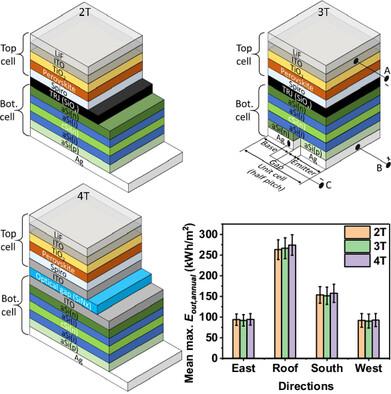Our official English website, www.x-mol.net, welcomes your feedback! (Note: you will need to create a separate account there.)
Analysis and Selection of Optimal Perovskite/Silicon Tandem Configuration for Building Integrated Photovoltaics Based on Their Annual Outdoor Energy Yield Predicted by Machine Learning
Solar RRL ( IF 7.9 ) Pub Date : 2024-04-03 , DOI: 10.1002/solr.202400072 Dong C. Nguyen 1, 2 , Tomoki Asada 1 , Itaru Raifuku 1 , Yasuaki Ishikawa 1
Solar RRL ( IF 7.9 ) Pub Date : 2024-04-03 , DOI: 10.1002/solr.202400072 Dong C. Nguyen 1, 2 , Tomoki Asada 1 , Itaru Raifuku 1 , Yasuaki Ishikawa 1
Affiliation

|
Accurate estimation of annual output energy yield (
中文翻译:

基于机器学习预测的年度室外发电量,分析和选择建筑一体化光伏发电的最佳钙钛矿/硅串联配置
准确估算年发电量(
更新日期:2024-04-03
中文翻译:

基于机器学习预测的年度室外发电量,分析和选择建筑一体化光伏发电的最佳钙钛矿/硅串联配置
准确估算年发电量(



























 京公网安备 11010802027423号
京公网安备 11010802027423号